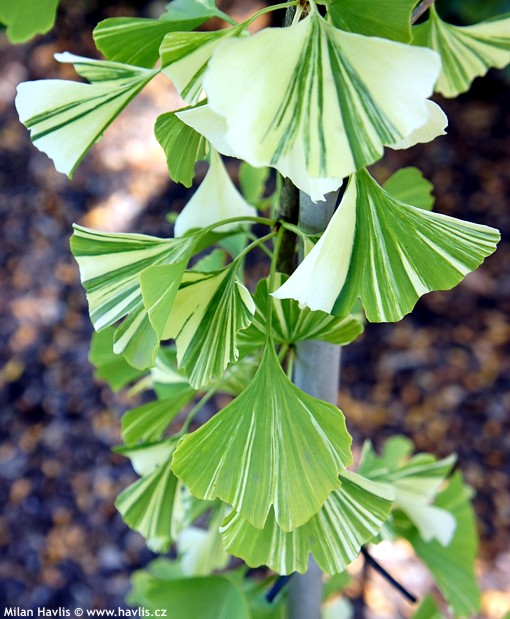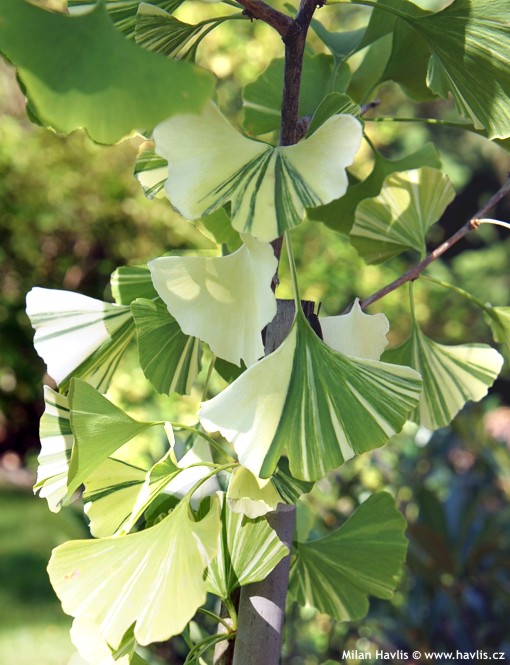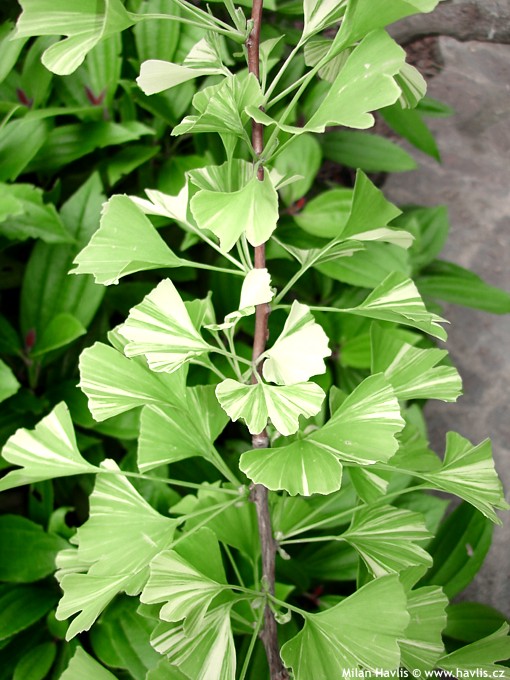Ginkgo biloba 'VARIEGATA' maidenhair tree
size/type
medium-sized shrub,medium-sized shrub
usual height
1-3m
usual width
1-2m
leaves
deciduous conifer
colour of leaves
flowers
insignificant or non-blooming
location
full to partial sun
USDA zone (lowest)
3 (down to -40°C)
winter protection
for zone 5+6

for zone 7

categorized
Ginkgo
Maidenhair tree is probably one of the oldest species on Earth. It was here some 180 million years ago … obviously it was the time when the Dead Sea was still ill. Its extreme tolerance of various conditions made it survive to our time. One tree can live as long as 2000 years. And being so popular among growers and enthusiasts, it is no wonder that several varieties have been selected and hybridized to fulfill the dreams of plenty of ginkgo lovers. In case of this variety the dreams were rather daring but came true.Description of the plant:
Variegata is a unique and elegant form of maidenhair tree, first discovered in 1854. Yet it is still very rare in cultivation and difficult to source. It bears deciduous, 4-7 cm wide, fan-shaped, divided, mid green leaves that show prominent variegation of creamy-white to light yellow colour. Each leaf is different, even entirely white, and some may reverse to green. Do not remove reversed branches – the variegation is unstable and the branches with green leaves may produce variegated leaves again the following season.It grows quite slowly and rather weak. In maturity it should make about 3m height and 2m width but it is almost impossible to encounter a plant of this size in cultivation. Some sources advise growing it in full sun for best variegation, others suggest giving it some shade to prevent the leaves from scorching. We grew it in both locations and it always did well. Maidenhair tree can withstand adverse conditions – heavy soil, air pollution, lack of moisture, extreme frosts. Once established it can take drought all summer long. For best results, however, grow it in medium fertile, well-drained, moist soil. Fully hardy to -40°C (USDA zone 3).
Last update 22-02-2012
QUICK PRICE OVERVIEW
CURRENTLY SOLD OUT
















